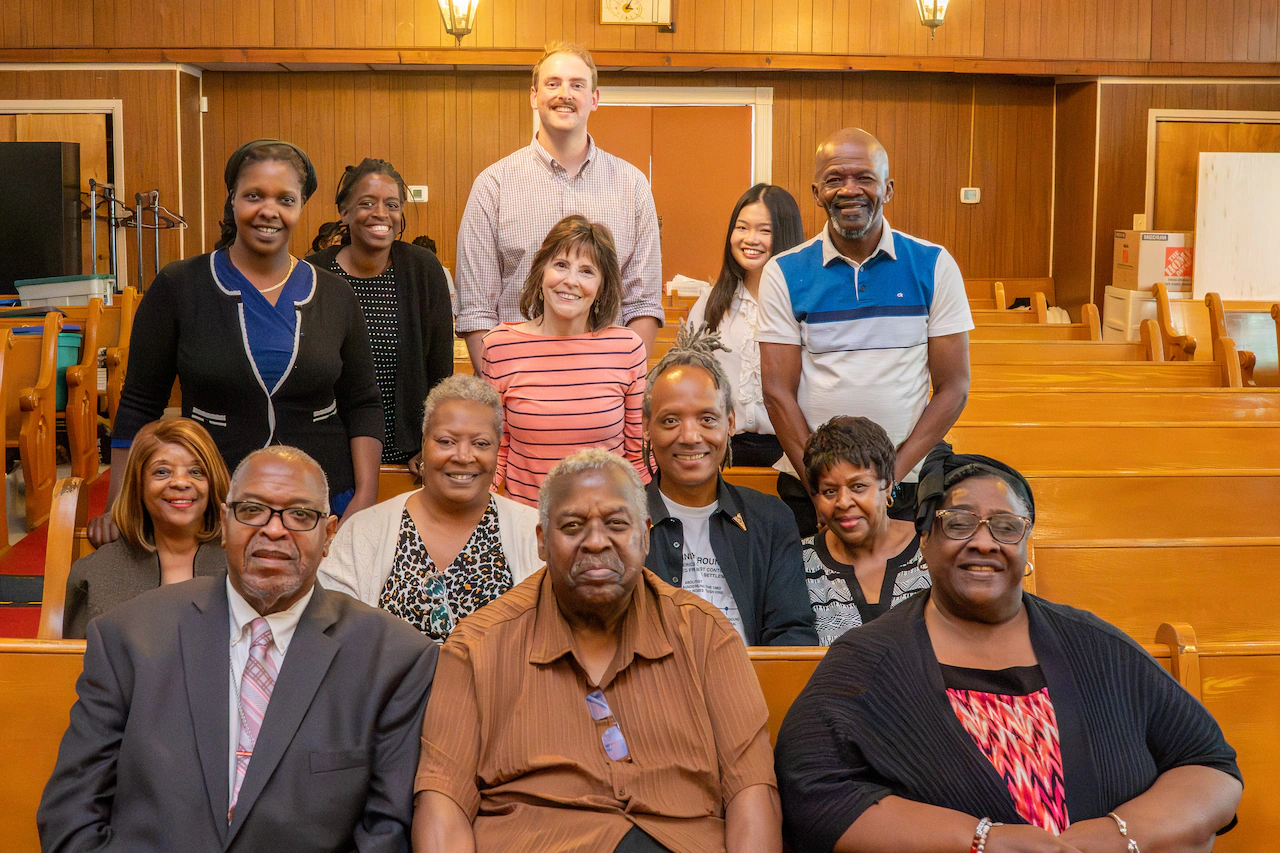
STATEN ISLAND, N.Y. — When Heather Butts was studying at Princeton University she was able to explore her deep-rooted passion for African American history, particularly from the 1800s. The interest was initially sparked in her teenage years after watching the movie Glory, which ignited a fascination with the role of Black soldiers who fought in the Civil War.
“I’ve been a historian since before college…I was struck by the fact that there were almost 200,000 Black soldiers during the Civil War,” said Butts, an associate professor at Columbia University’s School of Public Health, noting she later wrote a book about African American surgeons in the Civil War.
“Columbia asked me to teach a course about these surgeons, and I said, ‘I don’t want to just teach about these surgeons—I want to teach students how to tell their own untold stories,” she recalled.
And that’s just what Butts did by utilizing her Public Health graduate students at Columbia.
Now in its fifth year, Untold Stories is a community-driven initiative that emphasizes collaboration, authenticity, and community empowerment, said Butts. The stories are published on Columbia’s digital archive as scholarly publications.
“When you do your own untold story, you are the primary author, not me, not my students. And so you get a scholarly publication under your own name,” said Butts.
Sharing the untold stories of Sandy Ground
In her quest to tell untold stories, Butts partnered with the Rossville A.M.E. Zion Church, founded in 1897 in Sandy Ground, which is the nation’s oldest free Black settlement still inhabited by descendants of its pioneers. Through interviews, workshops, and storytelling sessions, the project is helping descendants of Sandy Ground residents share their personal and family histories.
From its start, Sandy Ground (first known as Harrisville, Africa and Little Africa) was a safe haven where free Black men, women and children thrived at a time when the horrors of slavery were still rampant in many places in the country.
And it has faced many challenges over the years, including: a fierce, destructive fire in 1963 that ravaged much of the South Shore; the dense development of Rossville in the 1990s with many attached homes; and many of the community’s descendants relocating to other parts of the country.
But Sandy Ground, which was founded in 1828, is still alive today. And many descendants gather every Sunday, either in-person or on Zoom, to attend services at the AME Zion Church.
Butts recent quest to tell descendants’ stories started with the church.
“We started doing these Zoom sessions, and we invited anybody who was a descendant to participate. Mainly, we worked with people who are descendants, who are still active in the church. And it’s just been an incredible journey; it’s been heartwarming and eye opening,” said Butts.
Heather emphasized that the success of the project lies in its organic growth: once stories are shared, they often inspire others to come forward with their own untold narratives, creating a ripple effect of historical preservation and community connection.
Butts has worked closely with Janise Laboard-Casimir, church historian, to identify Sandy Ground descendants who want to share their stories.
“They [Heather and her students] sat me down, and for the next 20 minutes, they started talking to me about my family,” recalled Laboard-Casimir, who is a direct descendant of Capt. John Jackson. He is believed to be the first Black boat captain on Staten Island, who transported “people and goods” on his ferryboat, which he operated along the Arthur Kill, between New Jersey and Rossville, making stops in Manhattan. It’s believed that Jackson also took part in helping enslaved African Americans escape via the Underground Railroad to Sandy Ground.
Laboard-Casimir said that first conversation led to multiple Zoom calls with several direct descendants of the historic community.
“Heather had the students interviewing us on Zoom in little breakout rooms…And it just turned into a really great relationship. She’s a really great person,” Laboard-Casimir added.
And Butts’ students are very enthusiastic about the project.
“I feel this great sense of community from the descendants of Sandy Ground and this tight knit community. ..I like following the breadcrumbs of the stories that each interviewee gave us,” said YaYin Ruan, an Oakwood Heights resident and Columbia University student pursuing a master’s degree in public health.
“I learned so much, like the bushfire [of 1963] that burned down a lot of houses in Sandy Ground. I got a lot of information and was able to experience the emotions people have regarding that event, including the trauma. The Sandy Ground descendants’ stories are very important and need to be told… they are really valuable and enriching.
Said fellow student Sam Somerville: “My experience with the project so far has been everything I could have hoped for. It has been incredible to find out more about Sandy Ground.”
“It’s incredible to see these stories of resiliency passed down from generation to generation. It’s really, really meaningful. And I’ve loved being able to work with the community so far, and looking forward to doing more,” he added.
In addition to the stories on Columbia’s website, the students said they hope to create a longer documentary or written work at some point.
AME Zion Church history
Founded in May of 1849 by Virginia-born African Methodist Episcopal Zion minister William H. Pitt, Rossville AME Zion Church has been the heart of the Sandy Ground community for close to two centuries.
In the early years, Pitt hosted prayer services in his home before the congregation purchased land on Crabtree Lane in 1852. According to documents from the Landmarks Preservation Commission, church members erected a no longer extant church building there, dedicated in 1854, and established the Rossville AME Zion Church Cemetery, which is now a designated New York City Landmark. By 1890 the congregation had outgrown that first church and purchased property at 584 Bloomingdale Road – where the church currently exists.
Constructed in 1897 by Tottenville builder-developer Andrew Abrams, the present building still maintains its original vernacular frame structure, fenestration window pattern and gabled porch, but was reclad at some point in time with faux brick siding. Dubbed a “rare and important surviving building from the period when Sandy Ground was a prosperous African American community on Staten Island,” by the Preservation Commission, the church was designated a city landmark in 2010.
Sandy Ground history
Sandy Ground is the third recorded community in New York where African Americans owned land, according to city Landmarks Preservation Commission. The first recorded Black landowners were the Harris brothers from New Jersey, who initially came to the area to work as gardeners.
The community grew larger in the 1850s when an influx of African American oystermen from Maryland became attracted to the area because of the abundant oyster beds of the Raritan Bay. During the 19th and 20th centuries, the community became self-sufficient and thrived as it housed a range of professionals and tradesmen, from blacksmiths and store owners to teachers and midwives.



